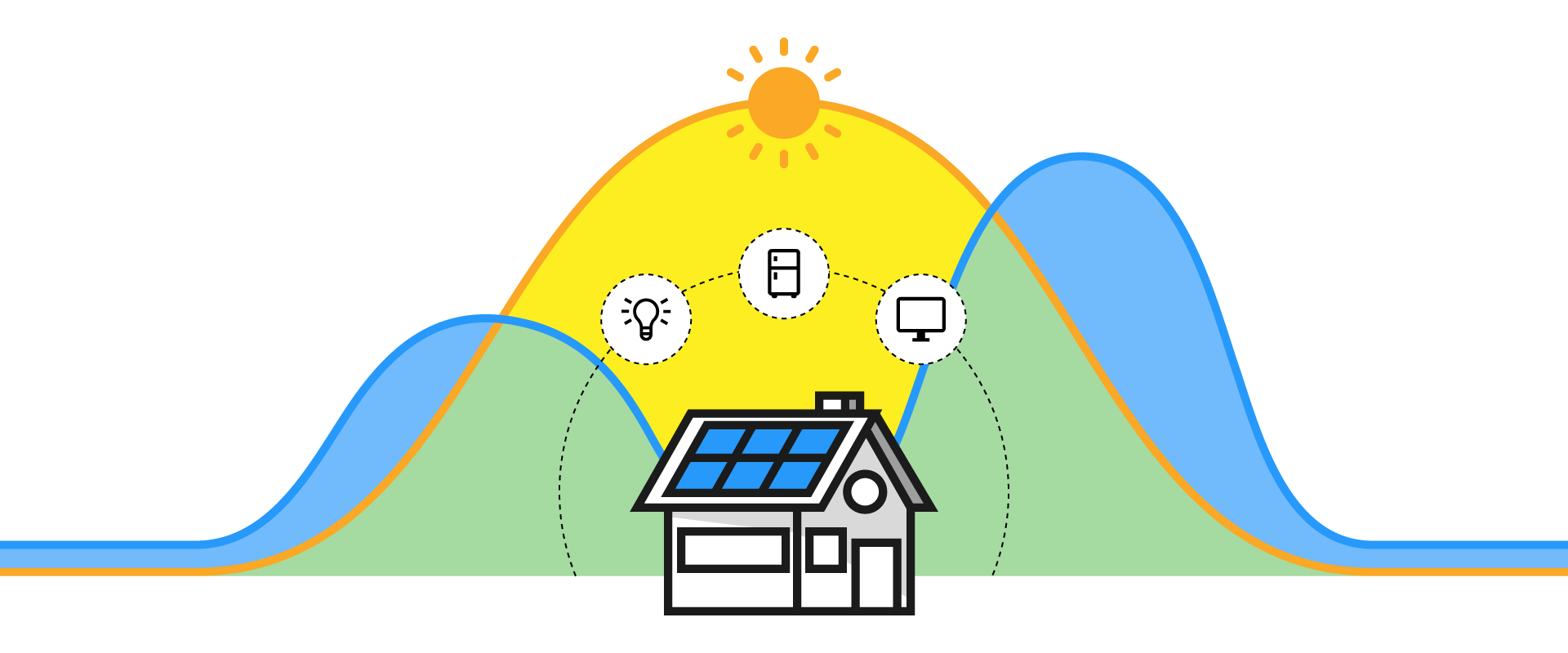How does energy self-sufficiency work?
With the help of the sun, your solar cells begin to produce electricity. During the day, cells can produce more energy than you need and this excess energy is stored in batteries in a hybrid converter. In the evening and at night, when there is no sun, your home will use electricity stored in batteries.
Consumption of stored solar energy, Solar energy consumption, Solar energy production

Characteristics of electrical components
A life not covered by the electricity grid requires more planning and flexibility to control electricity needs. Econo offers innovations that allow the installation of solar cells with a state-of-the-art energy storage system. This ensures freedom and an uninterrupted supply of energy. To do this you need:
Solar cells
BISOL Premium photovoltaic modules are known for their excellent performance, top quality, high energy yields and negligible degradation.
Check the offerInverter
It converts the energy produced from solar cells, and the energy stored from the batteries into a single-phase mains voltage of 230V (AC), with which you will meet your needs.
Check the offerSupporting constructions
Supporting constructions are dependent on the solar cell manufacturer. BISOL EasyMount's innovative supporting constructions offer smart solutions for every type of roof.
Check the offerBatteries
A battery designed to store energy derived from solar cells. It has a long service life of up to 20 years and excellent cyclic endurance of up to 1200 cycles.
Check the offerNo power connection
This way, you will be able to generate electricity with the help of solar cells on your weekend house or holiday home, which is not connected to the mains. This way, your electricity consumption will be 100% from renewable sources.
Frequently asked questions
The lifespan of solar cells is about 30-40 years. During this time, most systems require almost no maintenance other than cleaning (dust, leaves, snow). Their lifespan generally depends on the quality of the solar cells used and the quality of the entire installation. Annually, solar cells lose about half a percent of their total capacity. After 25 years of operation, quality solar cells will still operate with almost 90% efficiency.
The amount of electricity produced by solar cells depends on three factors:
efficiency of solar cells,
solar cell installations and orientations;
amounts of sunlight,
which comes directly to the installed surface of the solar cells. We will help you choose the capacity of the solar system according to your consumption or electricity needs.
It is important to reduce shading because solar cells operate at optimum power when their entire surface is fully exposed to direct sunlight. The system will still produce energy if it is in the shade, but energy production will be reduced.
Once the solar system is installed, it does not need to be maintained. We recommend that you periodically clean the solar cells and visually inspect the system. In this simple way, you will ensure their good functioning.
The solar system works on sunlight, not heat. In winter, there may be less sunlight, so electricity production is lower.
Yes. Solar collectors and converters are designed to withstand exposure to the weather. They tolerate exposure to extreme weather conditions, including rain and strong winds. The solar cells can withstand a certified nominal load of 5400Pa, which is equivalent to a 25mm thick hailstone falling at a speed of 83km / h. However, it is recommended that you protect your solar cells.


